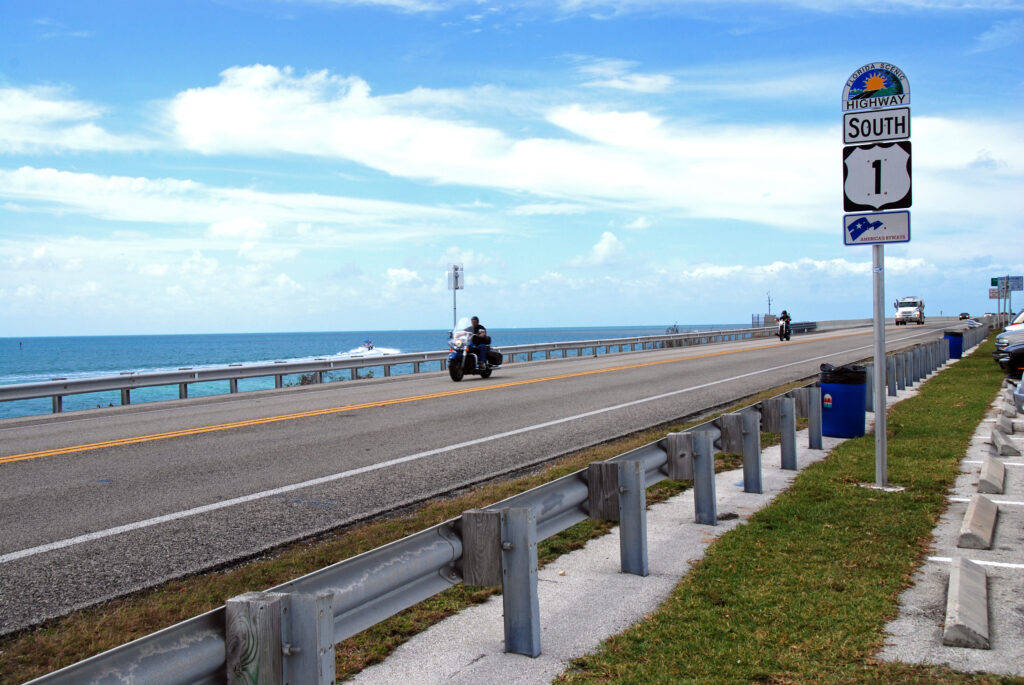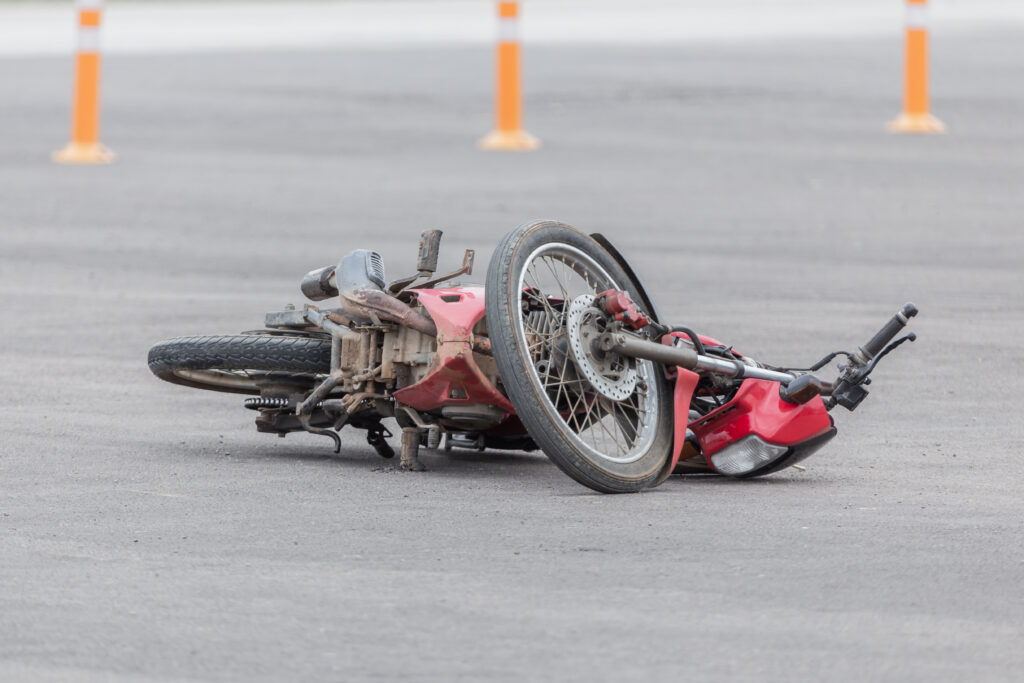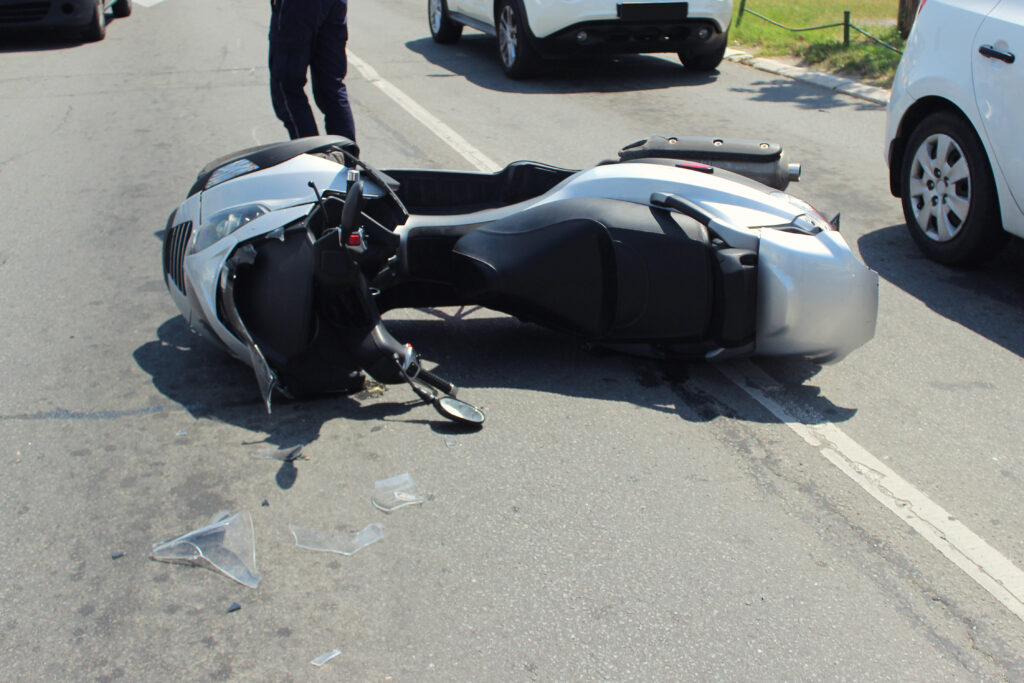Florida is a popular destination for motorcycle enthusiasts, with its warm weather, scenic routes, and exciting roads to explore. Whether you're a Florida resident or visiting from out of state, there are many amazing routes to check out on your motorcycle.
However, it's important to be aware that motorcycle accidents can happen anywhere, even on the most beautiful stretches of road. If you've suffered an injury in a motorcycle crash that wasn't your fault, an experienced motorcycle accident lawyer in Fort Lauderdale, Florida can help protect your rights and fight to get you the compensation you deserve.
Best Motorcycling Roads in Florida
Florida has no shortage of incredible motorcycling roads with breathtaking scenery, fun twists and turns, and minimal traffic. Here are some of the top routes motorcyclists love to ride in the Sunshine State:
Tamiami Trail
The Tamiami Trail, or U.S. Highway 41, stretches from Tampa to Miami across the Everglades. This 275-mile route takes you through vast wetlands, cypress swamps, and sawgrass prairies. You'll have the chance to see alligators, turtles, herons, and other wildlife. Several interesting stops exist, like the Shark Valley Visitor Center, Clyde Butcher's Big Cypress Gallery, and the historic Smallwood Store in Chokoloskee.
Ormond Scenic Loop & Trail

The Ormond Scenic Loop & Trail is a 30-mile route along the Atlantic Coast in Volusia County. The road winds through lush Florida forests and along the Intracoastal Waterway, offering views of the ocean and rivers.
You'll pass by scenic parks and historic sites like the Bulow Plantation Ruins and the Fairchild Oak, one of the largest live oak trees in the South. This route is an official Florida Scenic Highway.
Florida Keys Overseas Highway
The Florida Keys Overseas Highway, or U.S. Highway 1, is perhaps Florida's most iconic motorcycling road. This 113-mile route island hops from Key Largo to Key West, crossing 42 bridges, including the famous Seven Mile Bridge.
You'll ride over crystal blue waters with the Atlantic Ocean on one side and the Gulf of Mexico on the other. There are plenty of Keys to stop and explore, like Islamorada, known as the sportfishing capital of the world, and Bahia Honda State Park, with its pristine beaches.
Johns River to Sea Loop
The St. Johns River to Sea Loop is a scenic 260-mile route from St. Augustine to Mayport and back down along the coast through Palm Coast and Flagler Beach. You'll ride through historic towns, over rivers and creeks, and along unspoiled beaches with views of the Atlantic Ocean. Some highlights include the St. Augustine Lighthouse, Fort Matanzas National Monument, and Washington Oaks Gardens State Park.
Sugarloaf Mountain Road
Sugarloaf Mountain, near Clermont, is the highest point in peninsular Florida at 312 feet above sea level. The short but sweet Sugarloaf Mountain Road is popular with motorcyclists for its curvy route through orange groves and its sweeping views of Lake Apopka and the surrounding countryside from the top. On a clear day, you can see for miles. The nearby Citrus Tower also offers panoramic views over Lake County.
Worst Motorcycling Roads in Florida
While Florida boasts many incredible motorcycling routes, the state also has some treacherous roads that bikers should approach with caution. Dangerous road conditions, heavy traffic, and negligent drivers can all contribute to serious motorcycle accidents. Here are some of the most hazardous routes:
I-95
Interstate 95 runs almost 400 miles down the eastern coast of Florida, from the Georgia state line to Miami. It's a major north-south thoroughfare and one of the busiest highways in the country. Traffic congestion, aggressive drivers, and ongoing construction make I-95 especially dangerous for motorcyclists. The highway sees many accidents, injuries, and fatalities each year.
I-4
Interstate 4 stretches 132 miles across Central Florida from Daytona Beach to Tampa, passing through Orlando. It's another heavily congested highway that is risky for motorcyclists due to traffic density, speeding, and frequent construction. Based on the number of fatalities, I-4 has been ranked as the most dangerous highway in the country. Motorcyclists should be extremely cautious or avoid it altogether.
U.S. Highway 19
U.S. Highway 19 runs nearly 265 miles along Florida's west coast from Memphis, Florida, to the Georgia state line. The road is highly congested with local traffic, and the section through Pasco County is especially dangerous, with a high rate of crashes, injuries, and fatalities. It's a busy commercial strip with frequent intersections, stop-and-go traffic, and distracted drivers.
U.S. Highway 27
U.S. Highway 27 extends from Miami up through the middle of the state to the Georgia border and beyond. The hilly ridge section between Clermont and I-75 can be hazardous for motorcyclists, with many curves and elevation changes. The road needs resurfacing in many areas, so watch out for potholes and uneven pavement. It's also a major trucking route with a high volume of big rigs.
U.S. Highway 17

U.S. Highway 17 is another heavily traveled north-south route, nearly 320 miles from Punta Gorda to the Georgia state line. It passes through major cities like Orlando, Jacksonville, and Palatka.
The stretch from Orange Park to Green Cove Springs is particularly dangerous for motorcyclists, with heavy, fast-moving traffic and frequent crashes. There have been many fatal motorcycle accidents in this corridor.
Why Motorcyclists Are Vulnerable on Florida Roads
Riding a motorcycle is inherently more dangerous than driving a car. Motorcycles lack the protection and stability of passenger vehicles, and riders are more exposed and likely to be seriously injured in a crash.
Some reasons why motorcyclists are especially vulnerable include:
Less Visibility to Other Motorists
One of the biggest dangers motorcyclists face on the road is being less visible to other drivers. Motorcycles are much smaller than cars and trucks, so they can easily be hidden in blind spots or blend into the background.
This makes it harder for other motorists to see them, especially if they're not actively looking for motorcycles. Distracted, inattentive, or impaired drivers are even less likely to notice a biker in time to avoid a collision.
Motorcycles also have a narrower profile than other vehicles, making them more difficult to spot head-on or from the side. At night or in low-light conditions, motorcycle visibility is even more compromised. Motorcycle headlights are smaller and dimmer than car headlights, and the bike's tail light and brake lights are also less conspicuous.
Less Stability, Especially on Wet or Uneven Roads
Motorcycles are less stable than cars and trucks, particularly in adverse road conditions. With only two wheels in contact with the pavement, motorcycles are likelier to skid, slide, or wipe out when the road is wet, oily, or uneven. Potholes, cracks, grooves, loose gravel, and other road hazards that may be minor annoyances for a car can be major dangers for a biker.
Slippery surfaces reduce traction and make it harder for motorcycles to brake, turn, and maintain balance. If the front wheel loses grip while braking or cornering, the bike can easily go down. Hydroplaning, or riding up on a thin layer of water, can cause the motorcycle to suddenly lose contact with the road and crash.
Lack of Seat Belts, Airbags, and Other Protections
Another reason motorcyclists are more vulnerable to accidents is that they lack the protections that cars and trucks provide. Motorcycles don't have seat belts, airbags, crumple zones, or a metal cage around the rider. This means there's nothing to restrain the rider's body or absorb the impact forces in a collision.
In a car crash, seat belts, and airbags can help keep occupants inside the vehicle and cushion them from the violent forces of the impact. The car's frame and body are designed to crumple and absorb energy in a crash, shielding the occupants. But on a motorcycle, the rider's body takes the full force of the impact, often leading to severe injuries like broken bones, spinal cord damage, and traumatic brain injuries.
Motorcyclists' only protection is their gear, such as DOT-compliant helmets, heavy jackets, gloves, pants, and boots. While proper gear can help reduce the severity of injuries in a crash, it can't provide the same level of protection as a car's safety features. Sadly, many riders don't always wear all the recommended safety gear.
More Severe Impact Forces in Collisions
When a motorcycle collides with another vehicle or object, the impact forces are more severe and concentrated than in a car crash. This is due to the motorcycle's smaller size, lighter weight, and lack of protective structures. A motorcycle simply can't absorb and distribute crash forces as effectively as a larger, heavier vehicle with a reinforced frame.
In a car accident, the vehicle's bumpers, crumple zones, and safety cages help spread out the force of the impact and shield occupants from the full brunt of the collision. But in a motorcycle crash, the bike provides little to no buffer between the rider's body and the impact. This means the force is concentrated on the rider, leading to more serious injuries.
Motorcycles also have a higher center of gravity than cars, which makes them more likely to tip over or flip in a collision. When a motorcycle goes down, the rider can be thrown from the bike, skid across the pavement, or strike objects in their path. This secondary impact can cause further injuries, like road rash, fractures, and organ damage.
The severity of injuries in a motorcycle collision also depends on the speed and angle of the impact, as well as the size and weight of the other vehicle involved. A biker who is rear-ended by a large truck or hit head-on by a speeding car is likely to suffer catastrophic or fatal injuries. In these cases, a Florida motorcycle accident attorney can help recover compensation for damages and lost income.
Greater Risk of Ejection from the Bike
One of the most dangerous aspects of motorcycle accidents is the high risk of the rider being ejected from the bike. Unlike in a car, where occupants are enclosed and restrained by seat belts, motorcyclists are exposed and can easily be thrown off their bikes in a crash. This is known as a "rider ejection" or "rider separation."

When a motorcycle collides with another vehicle or object, the sudden impact can cause the rider to be launched forward and separated from the bike. The rider may fly over the handlebars or be tossed to the side, landing hard on the pavement or striking other vehicles, objects, or barriers.
Ejection accidents are particularly common in head-on collisions, rear-end accidents, and crashes that occur while the motorcycle is turning or changing lanes. The force of the impact, combined with the lack of restraints and the bike's instability, can easily unseat the rider and send them flying.
Riders who are ejected from their bikes are at risk of serious, often catastrophic injuries. Hitting the ground or objects at high speed can cause severe trauma to the head, neck, spine, chest, abdomen, and limbs.
Common ejection injuries include:
- Traumatic brain injuries
- Spinal cord injuries and paralysis
- Neck and back injuries
- Chest injuries, like broken ribs and punctured lungs
- Internal organ damage
- Bone fractures
- Severe road rash and lacerations
Many ejection accidents result in fatalities, as the rider may strike their head or suffer other lethal injuries. Wearing a DOT-approved motorcycle helmet and other protective gear can help reduce the risk of death or severe injury in an ejection crash, but it can't eliminate the danger.
Contact a Florida Motorcycle Accident Attorney
Florida offers some of the best motorcycling roads in the country, with scenic coastal routes, historic byways, and exciting stretches to satisfy any rider's tastes. But it's important to know the hazardous highways and risk factors that make Florida's roads dangerous for bikers. Heavy traffic, distracted drivers, poor road conditions, and dangerous intersections can all contribute to serious motorcycle accidents and injuries.
If you've suffered an injury in a motorcycle crash in Florida that was someone else's fault, you have rights. Consulting with an experienced Florida personal injury lawyer is the best way to protect yourself and seek the justice and compensation you deserve.
Don't try to go through the legal system on your own while you're recovering from injuries. Let a skilled attorney fight for you so you can focus on healing.